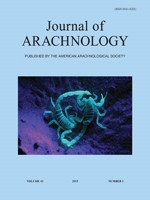We estimated a multigenic molecular phylogeny and reconstructed biogeographic history for the European harvestman genus Ischyropsalis C.L. Koch 1839 (Dyspnoi). To reconstruct historical biogeographic patterns we conducted an algorithmic VIP analysis which revealed patterns consistent with a vicariance-dominated history. The existing morphology-based systematic framework for Ischyropsalis is mostly inconsistent with molecular phylogenetic results, and a new informal system is established that recognizes three main clades and several sub-clades. Species-level analyses revealed two non-monophyletic species (I. pyrenaea Simon 1872 and I. luteipes Simon 1872); subspecies of I. pyrenaea are distant relatives, and are formally elevated to species (I. pyrenaea pyrenaea to I. pyrenaea and I. pyrenaea alpinula to I. alpinula). A preference for cryophilic microhabitats has favored the diversification of high-altitude and cave-dwelling Ischyropsalis species; molecular phylogenetic data suggest that cave-dwelling species have evolved multiple times independently.
How to translate text using browser tools
1 April 2015
Molecular phylogeny, biogeographic history, and evolution of cave-dwelling taxa in the European harvestman genus Ischyropsalis (Opiliones: Dyspnoi)
Axel L. Schönhofer,
Cristiano Vernesi,
Jochen Martens,
Marshal Hedin
ACCESS THE FULL ARTICLE

The Journal of Arachnology
Vol. 43 • No. 1
April 2015
Vol. 43 • No. 1
April 2015
biogeographic modelling
cave evolution
convergence
ecological specialization
multilocus phylogeny
species tree




